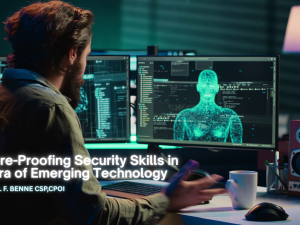When was the last time you learned a new job skill? I hope it wasn’t too long ago.
Learning to do new things at work makes employees feel a greater sense of purpose, more confident in their abilities, and more connected to their organization. Studies have proven that companies offering comprehensive training programs are 21% more profitable.[1] Those that provide continuous, formalized education have 56% higher employee retention.[2] Training is a win for everyone involved.
A special report from The Economist, “Learning and Earning,” argues that now, more than ever, adults must continue learning throughout their careers or risk getting left behind. Without on-going education, they are ill-prepared to adapt to today’s quickly evolving technologies and the resulting changes to their jobs. However, most companies and organizations fall short of providing the necessary, high-quality training to support this reality.[3]
A 2019 Harvard Business Review study reported that 75% of managers surveyed were dissatisfied with their company’s Learning and Development (L&D) function, and 70% of employees said they don’t have mastery of the skills needed to do their jobs.[4] It’s not that companies aren’t spending money. Investment in training programs has been on the rise for several years. Globally in 2022, companies spent approximately $381 billion U.S. dollars on L&D. In the U.S. alone, it exceeded $100 billion for the first time.[5]
What gives?
I have some strong opinions on this topic and have plenty of experience as a student and instructor to base them on. During my career, I’ve been through NYPD Police Academy Recruit training, earned a Bachelor’s degree and Juris Doctorate, attended hundreds of hours of In-Service and Leadership Development courses, and thousands of hours of Professional Development Courses. I’ve also spent ample time on the other side of the classroom as an instructor for the NYPD, an adjunct at a local college, a certified Security Guard instructor, and elsewhere. I’ve seen and experienced what works and what doesn’t firsthand.
Ineffective training isn’t a problem that can be solved simply by throwing more money at it. The trouble begins with weak training goals. Sometimes, companies offer employee training simply to check a box and say, “we’ve done that.” In such instances, it’s not surprising that employees aren’t satisfied. The information presented receives no reinforcement and is quickly forgotten. Exposure does not equal learning.
The goal of training programs should be to help workers master and retain the knowledge and skills taught.
With this in mind, some topics can be effectively taught in a single session or multi-session one-time course. In the universe of security and life safety, one-and-done applies to simple, consistent, and linear processes. Students learn, “You do this, and then this, and then this.” How to use a defibrillator or administer CPR fits in this category. It’s helpful to get a refresher periodically, but in a bind, most people can remember simple, linear tasks that they consider important. For example, I’m guessing most of you reading this can recall how you learned to clear Resuscitation Annie’s airway, locate a certain spot on her chest, and begin compressions to the beat of “Stayin’ Alive” – even if it was a long time ago and you haven’t practiced since.
However, most security-related courses cover more complicated, nuanced subjects, where best practices change with technological advancements. These topics require incremental learning, practice, reinforcement, testing, and updates.
Take Active Shooter training. The Run, Hide, Fight protocols are not taught as a progression – to always run first, then hide, and then fight. Potential targets in an active shooter scenario need to learn how to quickly assess a situation and determine how to maximize the probability of saving lives under extreme pressure. They must practice regularly in different hypothetical scenarios to develop confident decision-making and muscle memory. They may also require proficiency using communication systems for collaboration with other team members and first responders, and security technology for tracking and restricting an assailant’s movement within the facility.
Another good example is leadership training. As security practitioners get promoted within their organization, they may land managerial roles requiring new skill sets. Suddenly, they are responsible for setting security policies, motivating team members, and building stakeholder consensus. Even “born” leaders can dramatically improve their job performance through learning and practice of key skills like communication, conflict resolution, team-building, and strategic decision making. Managers who perform poorly in these areas become responsible for dysfunctional workplace cultures and low team morale, ultimately leading to high employee turnover.
Adding to the challenges of security training is the fact that in many settings, individuals responsible for security-related tasks perform those functions on top of their primary jobs. For example, school office administrators often play critical roles when security threats arise. They may have been shown how to institute a lockdown, call up surveillance video, or issue emergency communications. However, given their many daily responsibilities, they are likely to forget how to execute these procedures from a one-time training.
Instruction for complex operations or skillsets is most successful when learning is separated into manageable chunks, programs continually reinforce and build upon acquired skills, and practice is woven into workers’ everyday routines. Developing and delivering this type of training may seem like a heavy lift, but failing to do so results in an unprepared workforce that represents its own type of security threat. In reality, companies can’t afford to NOT have proven, high-quality training programs in place.
What do the most effective security training programs look like and how can any company – including those with limited internal resources – provide them? Be sure to check back for my next blog post when we’ll explore some answers.
[1] https://www.devlinpeck.com/content/employee-training-statistics
[2] https://www.intellum.com/blog/employee-training-statistics
[3] https://www.leadinglearning.com/economist-lifelong-learning/
[4] https://hbr.org/2019/10/where-companies-go-wrong-with-learning-and-development
[5] https://www.statista.com/topics/4281/workplace-learning-and-development/#topicOverview







